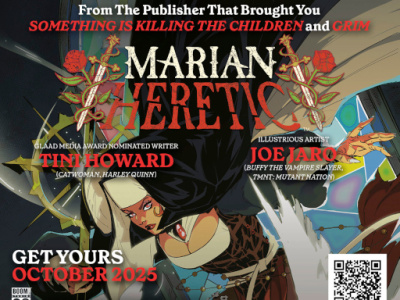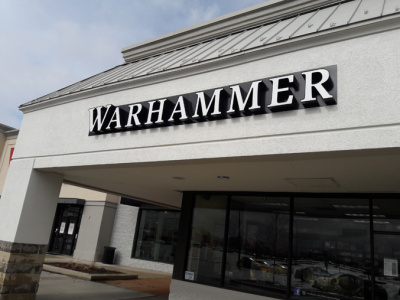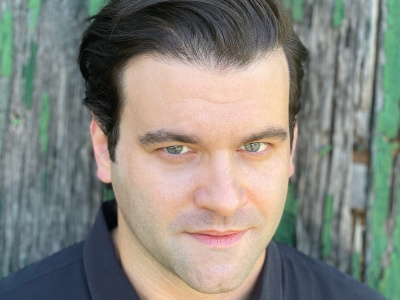Why is there a Phoenix Comicon today? Blame the gateway drugs of G.I. Joe and Lee/Kirby.
Matt Solberg was 11 years old and watching the G.I. Joe cartoon when a commercial urged him to try Marvel’s G.I. Joe comic book as well. Solberg did.
“Issue #48 was the first one that arrived in the mail, direct from Marvel in the brown wrapper,” he says today. He started buying back issues from the Mile High Comics ad in that same issue, and fast got himself a bonus coupon: If he spent $25, he could get a free comic. Solberg idly checked a box to get a free Captain America comic. He read the Stan Lee/Jack Kirby reprint he got, and a new world opened up.
“Now I was hooked on Captain America too,” he says. “So I’d get my G.I. Joe comics, and pick up Captain America. And Captain America was an Avenger, so I had to pick that one up. And when Captain America guest-starred in Amazing Spider-Man, well, this Spider-Man character was pretty fun, too. I was off to the races.”
By 15 years old, Solberg had amassed a collection, and started buying and selling comics through ads in Comics Buyers Guide. His parents would drive him in the family station wagon to set up at conventions through his teenage years.
College led him to a political science degree, and Solberg became a paid consultant working on campaigns ranging from city council to U.S. president. But after the presidential election of 2000, Solberg moved to Phoenix and was looking for a change.
“I didn’t even know if comic conventions were still around,” he says. “But that became my light bulb moment. I thought maybe I could run a convention.”
Solberg did, starting Phoenix Comicon in 2002. By 2016, it had become a juggernaut with 106,096 unique attendees. And Solberg has learned a lot along the way.
THE GOOD
Act on Your IdeaSolberg thinks the smartest thing he did was to identify an opportunity, and act quickly.
“I did some research [in 2001], and I found that there hadn’t been any conventions in the Phoenix area in 8 or 9 years,” he says. “So I started calling around the local convention centers and hotels.”
Solberg found a Best Western that was willing to rent him a ballroom for a Sunday for $1000. That room became the first Phoenix Comicon in 2002. Solberg attracted 432 attendees, and profited $192.
But things started taking off. The second year, Solberg profited $3000+ on Phoenix Comicon. Today?
“It’s been a very fulfilling job for me,” he says. “And it’s given me a good life. I have a house, I can pay my mortgage, and do some traveling. At the time, running a convention seemed more stable than being a dealer again. This way, I could sell the tables, I could get the ticket fees, and the revenue seemed more stable. It’s been a good choice.”
Listen, Listen, Listen!
In 2003, Solberg had a chance meeting that proved to be a giant accelerant for Phoenix Comicon.“I went to GAMA, the big gaming trade show in Vegas, and had a chance to sit down with Pat Henry, one of the co-owners of DragonCon, along with one of the co-owners of GAMA and Origins,” Solberg says.
The sit-down became a three-hour discussion in which the trio discussed pretty much every aspect of running a large-scale con.
“I learned everything down to how you negotiate a hotel contract,” Solberg says. “For me, it was one of those pivotal moments where I knew my life thereafter was going to be better.”
The knowledge was important. But to Solberg, recognizing the moment and what it meant was even more key.
“I think people have those moments in their life, but they don’t always make the connection that this is significant,” he says. “The key is recognizing it for what it is.”
Sweat the Details
Solberg likes the bright, positive aspects of running a comic con - bringing in new guests, expanding programming. But the gritty, detail work needs to be attended to as well.
“A few weeks before our 2013 show, we experienced the Boston Marathon bombing,” he says. “That really created a heightened awareness that changed the conversations we had with the Phoenix police department and the convention center. And the safety and well-being of the attendees is of the utmost importance.”
Solberg and Phoenix Comicon instituted bag checks at all entrances in response. “We invested more money in security to facilitate that, and it was an unexpected cost, but we felt it was worth it,” he says. “Ultimately, it made people more comfortable, and it made things more safe.”
Security is just one piece of a large puzzle. “I have to be concerned with street closures, and even traffic flow within the convention center, which determines what hallways we’re using, and which way escalators are running at different times,” Solberg says. “It’s the non-sexy aspect of running a convention, but it has to be done.”
THE BAD
Don’t Punch Out of Your Weight ClassSolberg found one thing he was genuinely bad at: Retail.
“One of my vendors at an early Phoenix Comicon told me, ‘Hey, I have an anime store I’ve been running for a few years. It’s profitable, but I want to simplify my life. If you know anyone who wants to buy it, let me know.’”
Solberg took the bait. “I was interested, I got a business loan and bought the store… without knowing a damn thing about anime, and not knowing how to run a retail store,” he says.
On his first weekend of ownership, he realized he had made the wrong decision.
“Customers were coming in and asking, ‘Hey, what happened to all the good stuff?’ I was buying the assets of the business, but he took all the good stuff.”
Solberg toughed it out, learning about anime, inventory turns, and cash flow. He managed to stay open for four years.
“The main concern was I had this loan, $872 a month,” he says. “I had to get that store profitable enough to pay off that loan. I just didn’t have the heart to sell a failing business to anybody. But I kept it going for four years.”
Don’t Underestimate Where Things Live
Solberg got a taste of blowback recently when Phoenix Comicon decided to source its volunteers through the Blue Ribbon Army, a nonprofit that he had a hand in creating. He later changed policy to an all-paid staff, fewer in numbers. Along the way, many egos were bruised.“I’m still in midst of this, so it’s hard to reflect on, but I definitely underestimated the resistance to change,” Solberg says. “I did not see the firestorm coming. I knew some people were going to be critical of it; I knew some people would want to jump ship. But the firestorm it created… I did not see that coming.”
Solberg now realizes there’s ownership in reality, and a more ethereal “ownership” that comes when people feel a part of something.
“I didn’t talk to enough different people about it as we were making that decision,” he says. “I was talking to my employees, I was talking to others I knew who knew business. But I wasn’t talking to enough people who were in on-site volunteer positions to get what their take was going to be on it. The mistake was that I was closed off. I went back and realized, man, if I would have talked to some of these people, I would have appreciated more in depth the level of emotion and passion they have for the con.”
Expand Faster!
At more than 100,000 unique attendees, Phoenix Comicon is a juggernaut. But Solberg thinks there’s still opportunity lost.
“I didn’t grow it and expand it as fast as I should have,” he says. “I ran Phoenix Comicon as a 1-day swap meet for four years, while other shows were growing quickly, and probably got established a little faster. Even today, I think we still play catch-up with other shows in being able to book talent.”
Solberg found that when things expanded, economy of scale made things easier in many ways.
“In some ways, it’s easier to be a big convention,” he says. “With size comes some power, and your phone calls get returned and meetings get scheduled.”
Solberg’s bottom line advice? “Grow your business as quickly as you can.”
AND WHAT ELSE?
“Organizing a political campaign and organizing a comic book convention are very similar. They’re both timed events. In both, you’re trying to persuade someone to take a specific action at a specific time. And you’re dealing with marketing and personalities.”“I’m a stubborn individual by nature. And competitive. I don’t like to give up or feel like I’ve lost. That’s part of the reason I kept going with that store, but at some point, you just need to make a decision and cut. And when I did, the world got brighter, there were leaves in the trees, and my life was a lot less toxic.”
“A while back Heidi MacDonald [of Comicsbeat.com] ran a listing of top comic cons in North America and then asked for numbers from organizers. I replied with specifics and breakdown by day and type, and I gathered from her positive reaction that we were one of the few to be open about our numbers. We have always reported our unique attendance count, each person counting once. We started reporting daily attendance, counting people attending each specific day, and then adding those numbers together. For 2016, we had unique attendance of 106,096, and a daily attendance total of 216,219.”
“We like specific numbers and knowing the methods used to count attendance.”
“As we get larger, we pull in more mainstream attendees, people with more a passing interest in comics. You still have to take care of the hardcore fans, but we have to be mindful to provide something for that more casual family of four who saw the Avengers movie.”
“We take the tack that what’s good for the hardcore is good for everyone else. If we bring in Chris Claremont, the every-Wednesday comic book crowd is very happy. And we can pitch mom, dad and the kids on, ‘If you like the X-Men movies, it’s all about his work. And here’s a graphic novel, you should read it.’ It’s kind up a trickle-up theory.”
“And it goes both ways. If we bring in Katie Cook who’s doing My Little Pony, well, the hardcores probably aren’t reading My Little Pony. But the kids with those parents are, and that cross-pollenates.”
Click gallery below for con photos.



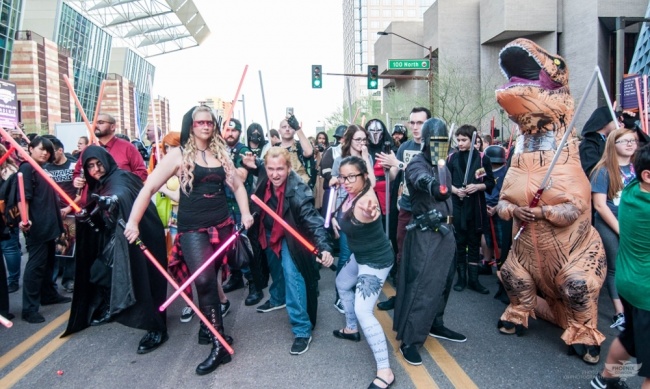



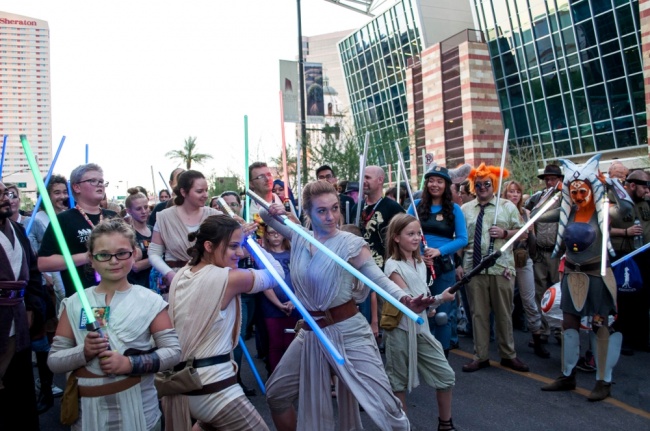
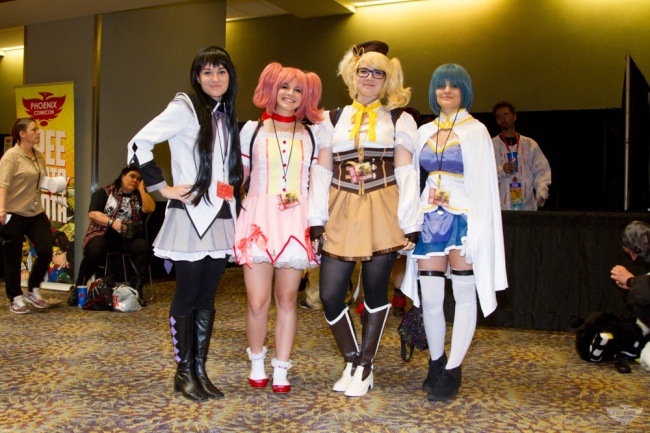
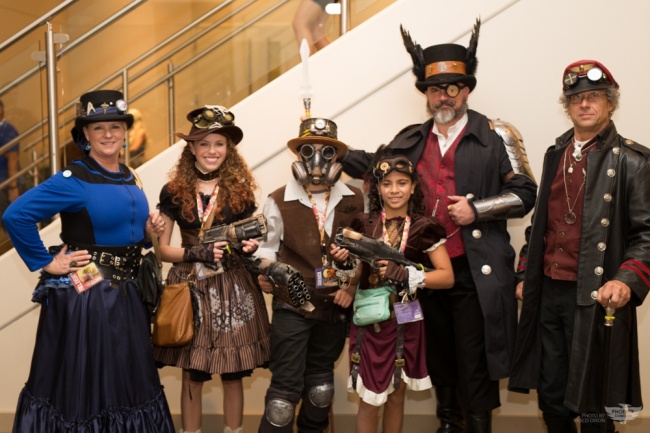
 View Gallery: 6 Images
View Gallery: 6 Images 
